
Roots
The journey to understanding textured hair begins not with the products we apply, but with the very core of each strand, deep within its cellular makeup. For generations, wisdom passed down through families guided care, often through intuition and observation. Now, scientific inquiry gently lifts the veil, revealing the exquisite engineering within each curl, coil, and wave.
This closer look permits a more informed approach to nurturing textured hair, moving beyond surface concerns to address its inherent structural characteristics. It is a path of discovery, where curiosity meets the tangible reality of what makes textured hair so distinct and, at times, so delicate.
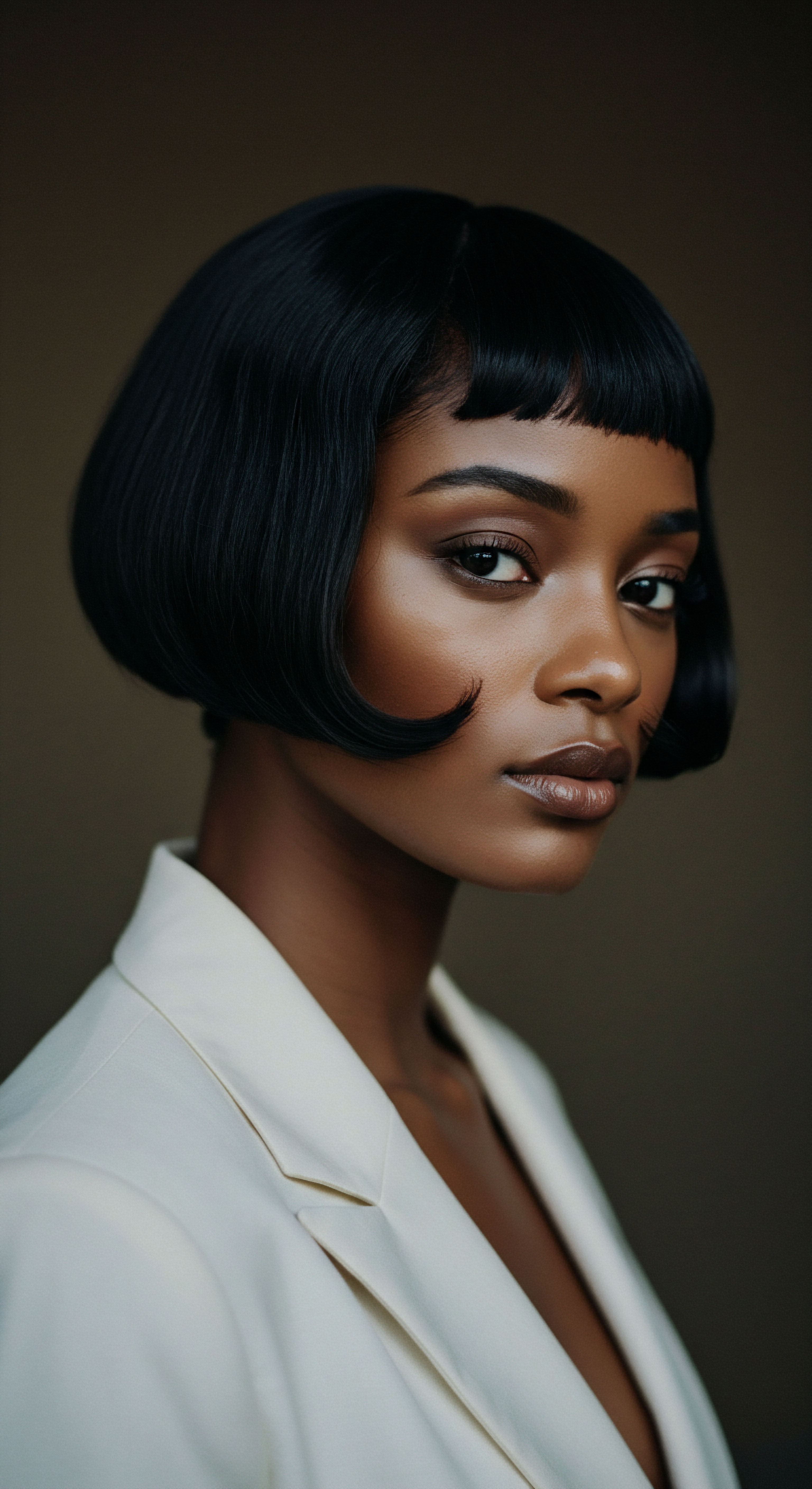
Hair Anatomy and Physiology Specific to Textured Hair
At its simplest, hair is a complex protein filament, primarily composed of keratin. Yet, the story of textured hair is one of subtle, yet significant, deviations from the universally depicted straight strand. Each hair shaft, whether straight or coiled, comprises three main layers ❉ the outer cuticle, the central cortex, and, sometimes, an innermost medulla.
- Cuticle ❉ This outermost protective layer consists of overlapping, scale-like cells, much like shingles on a roof. In textured hair, these scales tend to be more lifted or raised at the bends and twists of the curl pattern. This natural configuration can lead to increased porosity, allowing moisture to enter readily but also to escape with ease.
- Cortex ❉ The cortex forms the bulk of the hair fiber, housing the keratin proteins, melanin (which gives hair its color), and various bonds that determine the hair’s strength and elasticity. For textured hair, the cross-sectional shape of the cortex is typically elliptical or flattened, contrasting with the more circular shape found in straight hair. This elliptical shape, combined with an uneven distribution of keratin proteins within the cortex, contributes significantly to the hair’s coiled appearance. Research suggests that in curly hair, specific keratins, such as hHa8, accumulate on the concave side of the curvature, a distinct difference from their even dispersal in straight hair.
- Medulla ❉ This innermost core, a soft, sometimes hollow channel, is not present in all hair types or even along the entire length of a single strand. In textured hair, its presence can vary, and its precise role in curl formation remains an area of ongoing study.
The inherent bends and twists of textured hair fibers mean that natural oils, produced by the scalp, struggle to travel down the length of the strand. This structural reality contributes to the perception of dryness often associated with textured hair, as the natural lubrication does not easily reach the ends.
Understanding the microscopic architecture of textured hair provides a lens through which to view its unique requirements.

Textured Hair Classification Systems
For many, understanding hair began with classification systems, often seen as a first step toward tailored care. Systems, such as the Andre Walker scale, categorize hair into types ranging from straight (Type 1) to wavy (Type 2), curly (Type 3), and coily or kinky (Type 4), with further sub-classifications (A, B, C) based on curl tightness. While these systems offer a useful shorthand for describing external curl patterns, it is important to remember they are broad guidelines.
These classifications help in identifying general tendencies for moisture retention, fragility, and styling needs. For instance, Type 4 hair, characterized by tight, often zig-zagging coils, typically exhibits a higher degree of cuticle lifting and a greater propensity for dryness and breakage compared to looser curl patterns. However, two individuals with the same numerical hair type can still have vastly different hair experiences due to variations in porosity, density, and individual fiber characteristics. A truly personalized care regimen looks beyond a simple number or letter, considering the individual strand’s behavior.

The Essential Lexicon of Textured Hair
A precise vocabulary allows for a deeper connection with one’s hair and more effective communication about its needs. Beyond curl patterns, certain terms illuminate the hair’s internal behavior:
- Porosity ❉ This term describes the hair’s capacity to absorb and retain moisture and other substances. High porosity hair, often a characteristic of textured hair due to its lifted cuticle scales, readily takes in water but loses it just as quickly. Low porosity hair, with tightly bound cuticles, resists moisture absorption but retains it well once wet.
- Elasticity ❉ This refers to the hair’s ability to stretch and return to its original shape without breaking. Healthy hair possesses good elasticity, indicating strong internal bonds. Textured hair, with its unique bends and twists, can be more prone to mechanical stress during stretching, affecting its elastic limits.
- Density ❉ This refers to the number of individual hair strands on the scalp. Textured hair, despite its voluminous appearance, often has a lower follicular density compared to straight hair.
- Curl Pattern ❉ This describes the shape the hair forms, from waves to loose curls, tight coils, and zig-zagging kinks.
Grasping these terms permits a more scientific dialogue about hair health, allowing individuals to choose products and practices that align with their hair’s actual structural properties rather than relying on generic advice.
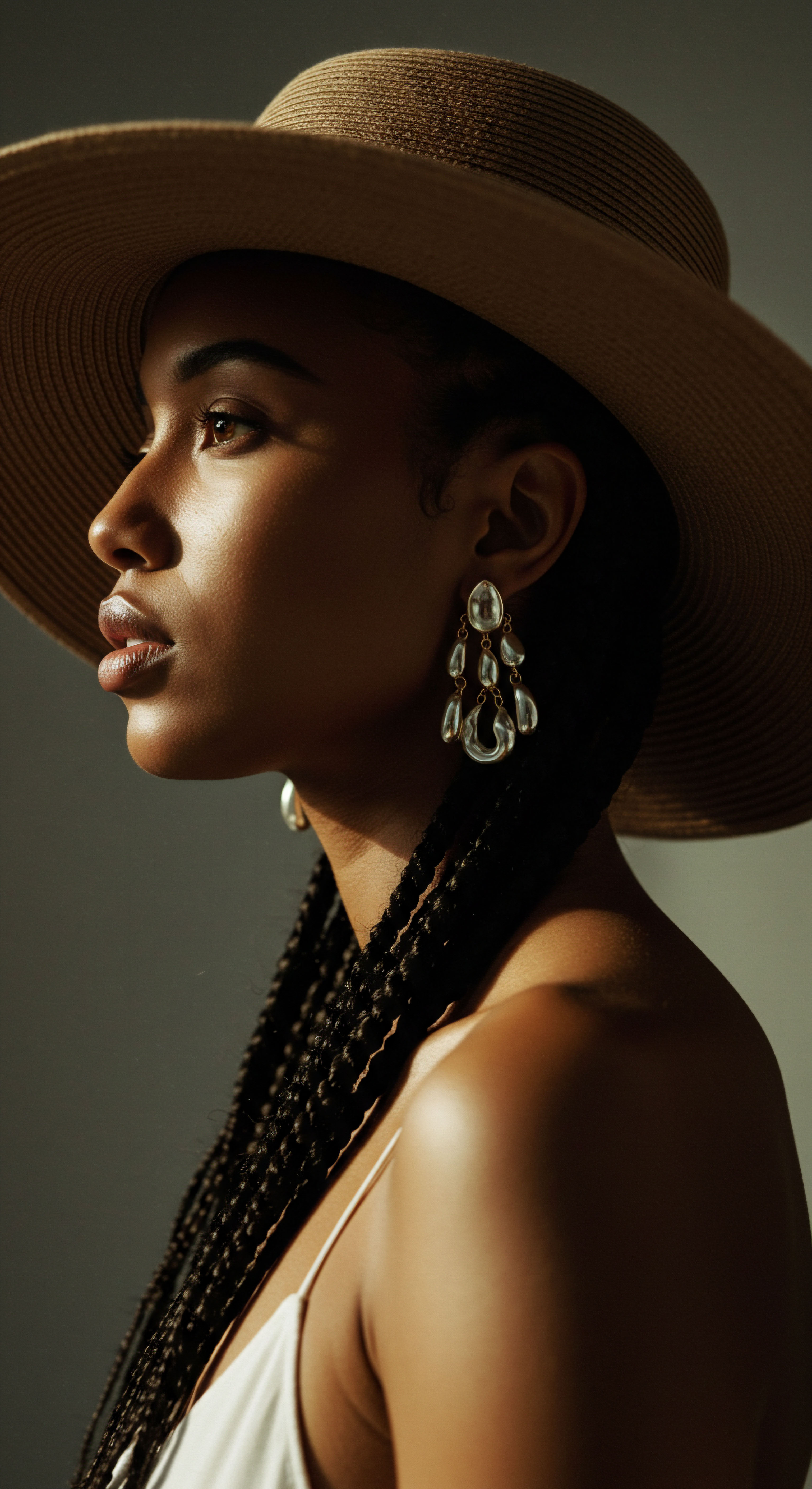
Hair Growth Cycles and Influencing Factors
Hair growth is a cyclical process, unfolding in three main phases:
- Anagen Phase ❉ The active growth phase, lasting several years. During this time, hair cells rapidly divide, pushing the hair shaft upwards.
- Catagen Phase ❉ A transitional phase, lasting a few weeks, where hair growth slows and the follicle shrinks.
- Telogen Phase ❉ The resting phase, lasting a few months, after which the old hair sheds and a new anagen hair begins to grow.
While these cycles are universal, various factors can influence their duration and the quality of the hair produced, particularly for textured hair. Genetics play a primary role in determining curl pattern, density, and growth rate. For example, textured hair often exhibits a slower growth rate compared to straight hair. Beyond genetics, nutrition, hydration, scalp health, and external manipulation all bear upon the hair’s life cycle.
Mechanical stress from daily styling, for instance, can prematurely shift hairs from the anagen to the telogen phase, leading to increased shedding and perceived slower growth. Hormonal changes can also alter hair texture and density. Recognizing these influences empowers individuals to create environments conducive to healthy hair growth from the root.

Ritual
Moving from the foundational understanding of hair’s inner workings, we arrive at the practices that bring this knowledge to life. The care of textured hair is a daily dance, a thoughtful routine that marries scientific principles with the wisdom of touch and observation. It is here, in the gentle application of a conditioning cream or the deliberate sectioning for a protective style, that we translate abstract structural insights into tangible acts of nurturing. This section explores the techniques and tools that, when chosen with an appreciation for the hair’s delicate internal architecture, lead to strands that feel vibrant and resilient.

Protective Styling Encyclopedia
Protective styles serve as a shield, minimizing external manipulation and safeguarding the hair’s delicate ends. By tucking away the hair, these styles reduce exposure to environmental stressors, friction from clothing, and the constant tugging of daily detangling. This approach directly supports the hair’s structural integrity, especially for textured hair which is inherently more prone to breakage due to its twists and turns.
Popular protective styles include:
- Braids ❉ Whether cornrows, box braids, or plaits, braids keep sections of hair neatly contained, reducing tangling and friction. Proper tension is paramount to avoid stress on the scalp and hair follicles.
- Twists ❉ Two-strand twists or flat twists offer similar benefits to braids, often with less tension, and can be particularly effective for defining curl patterns.
- Buns and Updos ❉ Simple, elegant styles that keep the hair gathered, protecting the ends from rubbing against surfaces.
The success of protective styling hinges on preparation and maintenance. Hair should be cleansed, deeply conditioned, and moisturized before styling to ensure it is hydrated within its protective enclosure. The scalp also requires attention, needing regular cleansing and moisturizing to remain healthy. The period a protective style is worn should be balanced with periods of allowing the hair to breathe, preventing product buildup and excessive tension.
Protective styles offer a gentle reprieve for textured hair, shielding its delicate architecture from daily wear.
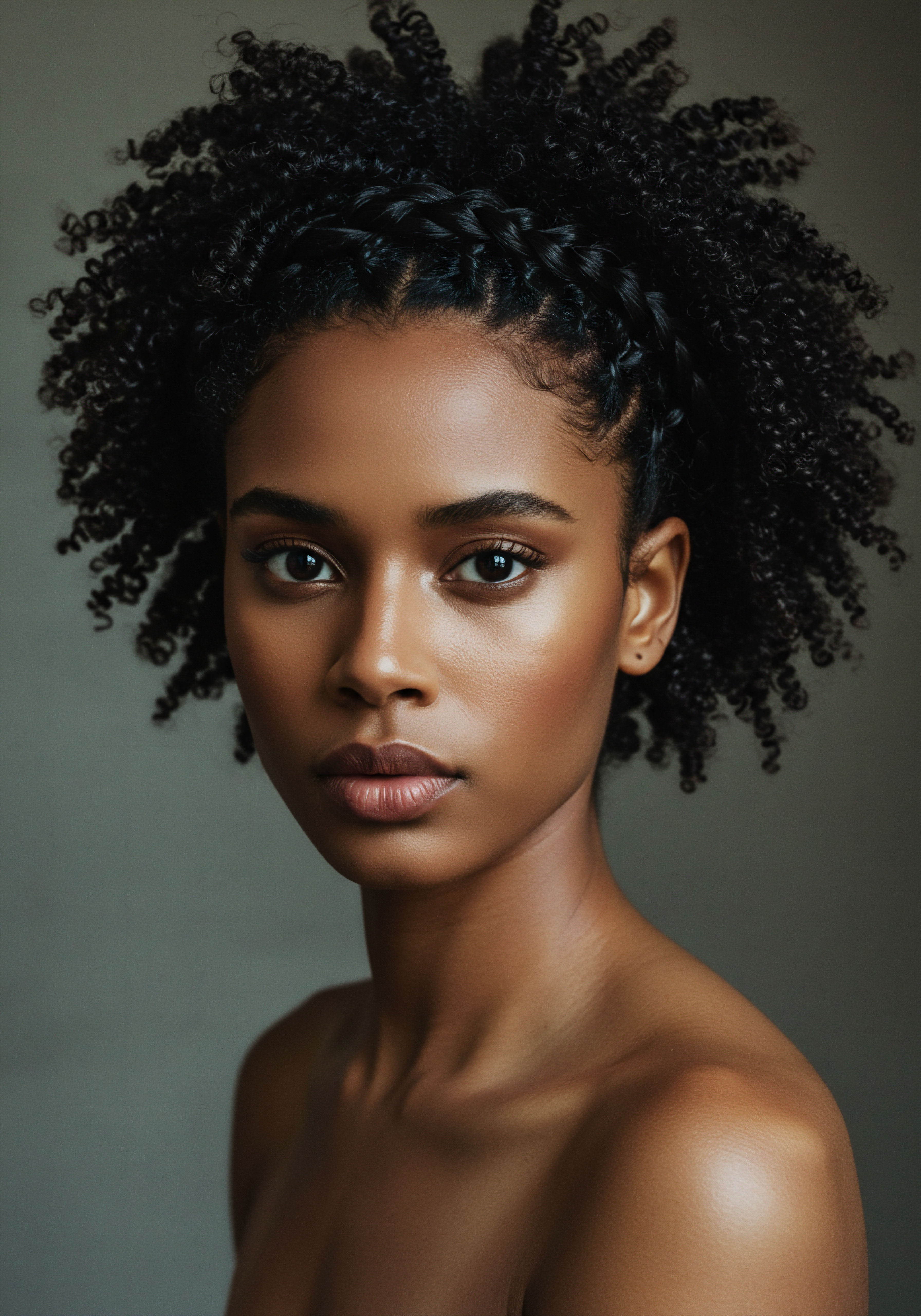
Natural Styling and Definition Techniques
Celebrating the natural shape of textured hair involves techniques that enhance its inherent curl without resorting to harsh chemicals or excessive heat. These methods work in harmony with the hair’s internal structure, promoting definition and reducing frizz by encouraging the cuticle layers to lie more smoothly.
- Wash and Go ❉ This technique involves cleansing, conditioning, and applying styling products to wet hair, allowing it to air dry or diffuse to reveal its natural curl pattern. The key is proper product application, ensuring even distribution to coat each strand and help define its shape.
- Twist-Outs and Braid-Outs ❉ These methods involve styling damp hair in twists or braids, allowing it to dry, and then carefully unraveling the sections to reveal elongated, defined curls. The resulting definition comes from the hair drying in a structured, stretched state, which can temporarily reduce shrinkage.
The choice of products is central to these techniques. Leave-in conditioners provide a foundational layer of moisture. Styling creams offer softness and clump curls. Gels provide hold and definition, helping to seal the cuticle and reduce frizz.
Understanding how these products interact with the hair’s porosity, for instance, allows for selection that ensures ingredients penetrate or coat the hair effectively. For high porosity hair, sealing agents are often essential to lock in the moisture from hydrating products.

Wigs and Hair Extensions Mastery
Wigs and hair extensions offer versatility and, when used thoughtfully, can serve as another form of protective styling. They allow individuals to experiment with different looks without altering their natural hair, while simultaneously providing a barrier against environmental damage and daily manipulation.
The mastery of wigs and extensions involves careful consideration of the natural hair underneath. Proper braiding or cornrowing of the natural hair ensures a flat, secure base and minimizes tension. Scalp care beneath wigs and extensions is paramount; regular cleansing and moisturizing prevent buildup and irritation. Choosing breathable wig caps and avoiding excessively tight installations safeguards the hair follicles from stress, which could otherwise lead to traction alopecia.
For extensions, selecting types that match the natural hair’s weight and density helps prevent strain on individual strands. This conscious approach ensures that while the external style may change, the internal health of the hair remains a priority.
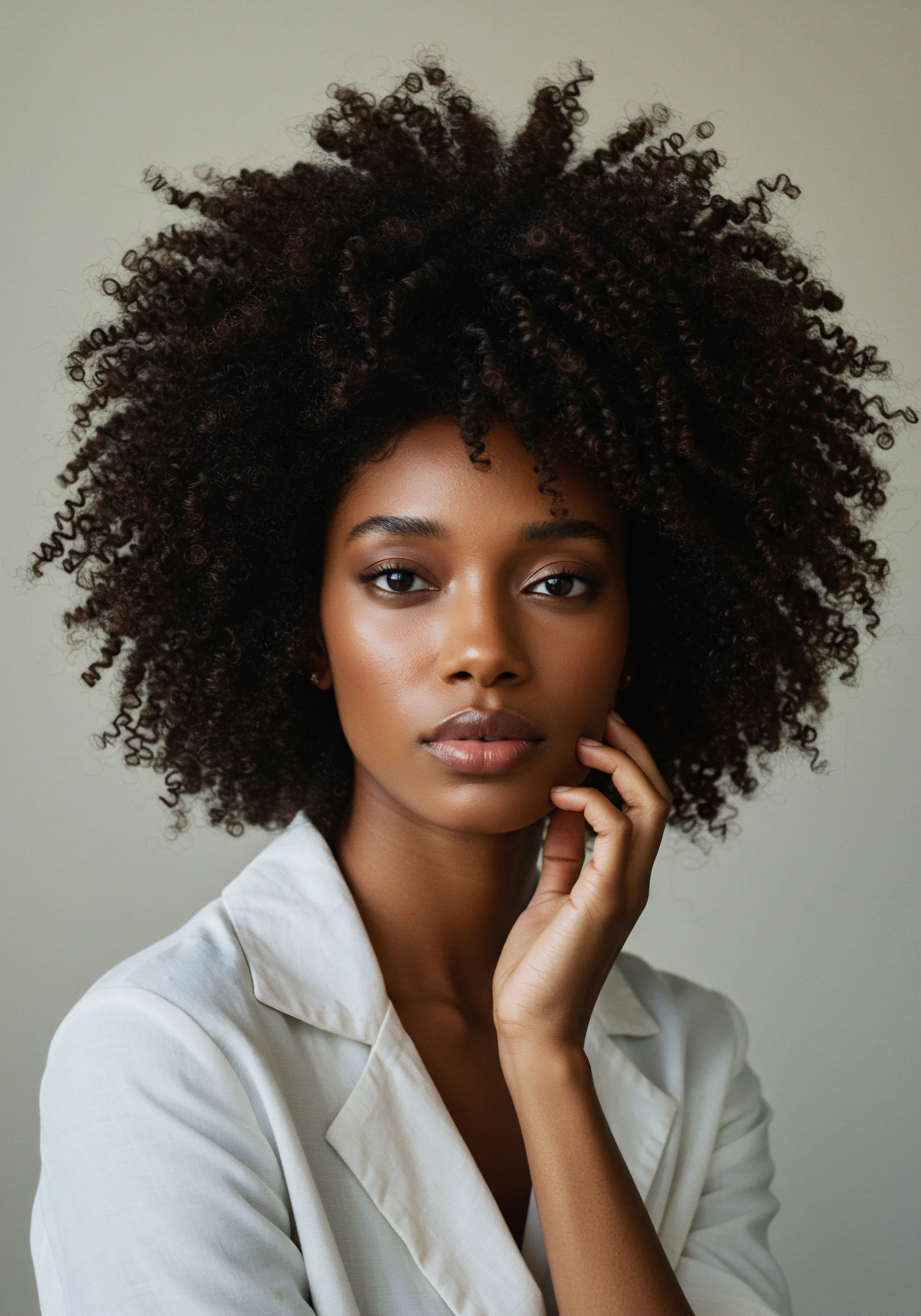
Heat Styling and Thermal Reconditioning with a Safety First Approach
Heat styling, while offering transformative results, presents a unique challenge for textured hair due to its inherent fragility. The application of high temperatures can alter the hair’s protein structure, specifically denaturing keratin, leading to irreversible damage. This damage often manifests as a compromised cuticle, leaving the cortex exposed and vulnerable to moisture loss and breakage.
A safety-first approach to heat styling is therefore non-negotiable. This involves:
- Lower Temperatures ❉ Utilizing the lowest effective heat setting on styling tools minimizes thermal stress.
- Heat Protectants ❉ These products form a barrier on the hair surface, helping to distribute heat more evenly and reduce direct thermal impact. They often contain silicones or polymers that coat the cuticle, providing a temporary shield.
- Limited Frequency ❉ Reducing the frequency of heat application allows the hair to recover and maintain its structural integrity. Occasional heat styling, rather than daily use, significantly mitigates risk.
- Deep Conditioning ❉ Pre- and post-heat treatments with protein and moisture-rich conditioners can help fortify the hair’s internal bonds and replenish lost hydration.
Thermal reconditioning, or chemical straightening, involves breaking and reforming the hair’s disulfide bonds, fundamentally altering its internal structure. This process is highly invasive and can severely compromise hair strength, particularly for textured hair which already possesses areas of inherent weakness. Such procedures demand professional application and meticulous aftercare to mitigate damage and maintain any remaining structural integrity.

The Complete Textured Hair Toolkit
The right tools are extensions of thoughtful care, chosen to respect the delicate nature of textured hair. Their selection directly impacts how the hair’s cuticle and cortex are treated during daily manipulation.
A comprehensive toolkit includes:
- Wide-Tooth Combs ❉ Essential for detangling, these combs glide through curls with minimal friction, reducing the likelihood of snagging and breakage. Detangling should always occur on wet or damp hair, preferably saturated with conditioner, to provide slip and minimize mechanical stress.
- Detangling Brushes ❉ Brushes with flexible bristles or specific designs for textured hair can aid in distributing product and gently separating strands without excessive pulling.
- Microfiber Towels or Old T-Shirts ❉ These materials absorb excess water without creating the friction and frizz that traditional terrycloth towels can cause, preserving the cuticle’s integrity.
- Spray Bottles ❉ Ideal for re-wetting hair during styling or for refreshing curls between wash days, ensuring the hair is pliable and less prone to breakage.
Each tool is chosen with the understanding that textured hair’s elliptical shape and often lifted cuticles make it more vulnerable to mechanical damage. The goal is to minimize friction and tension, allowing the hair to retain its natural strength and moisture.

Relay
Stepping further into the dialogue surrounding textured hair care requires a consideration of its intricate interplay with science, cultural heritage, and personal well-being. It is a space where the microscopic realities of a hair fiber meet the broader human experience, revealing how deeply our understanding of internal structure can influence our daily practices and perceptions. This exploration moves beyond simple how-to guides, inviting a deeper contemplation of why certain approaches resonate and what scientific underpinnings truly inform effective care.
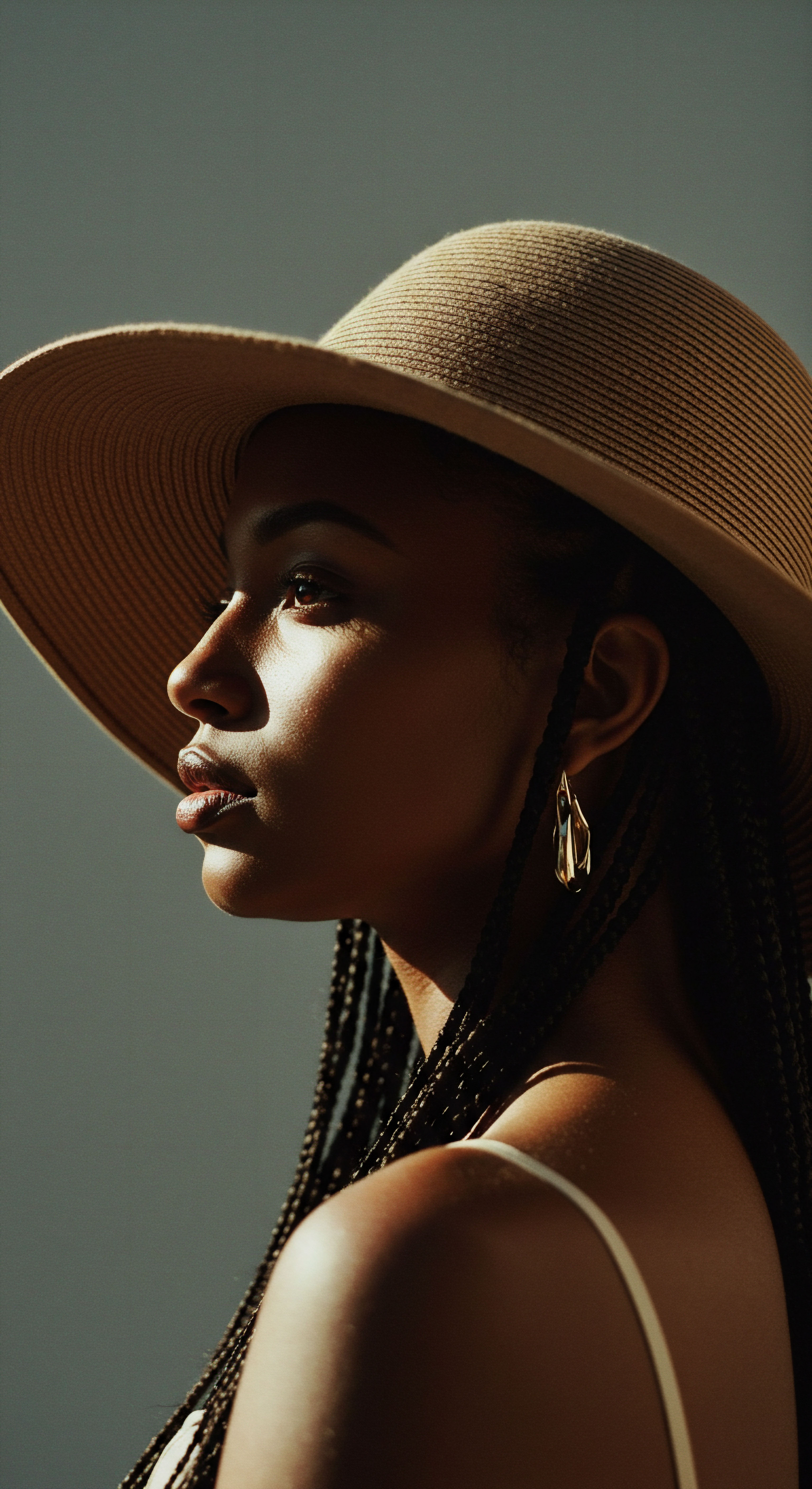
Does Understanding Hair’s Internal Structure Aid Care?
The profound impact of grasping hair’s internal structure on care practices is undeniable. When we comprehend that textured hair fibers possess an elliptical cross-section and an uneven distribution of keratin, we gain insight into its inherent fragility and its tendency to twist and coil. This knowledge directly informs the need for gentle handling and specific product choices. For instance, the understanding that textured hair’s cuticle layers may naturally be more lifted, particularly at the bends of the curl, explains why this hair type often experiences higher porosity.
A higher porosity means that while water and conditioning agents can easily enter the hair shaft, they can also escape just as quickly, leading to persistent dryness. This scientific reality then guides product selection towards heavier emollients, sealing oils, and layering techniques to lock in moisture. Conversely, recognizing that the natural oils from the scalp struggle to descend the winding path of a coiled strand clarifies why textured hair often requires external moisturizing, even if the scalp produces sufficient sebum. This scientific grounding moves care from guesswork to a reasoned, effective regimen, tailored to the hair’s actual biological needs.

Cultural Context of Textured Hair Care
The journey of textured hair care is deeply rooted in cultural narratives, historical practices, and evolving perceptions of beauty. For centuries, diverse communities have developed unique methods of cleansing, styling, and protecting textured hair, often passed down through generations. These traditions reflect a profound connection to identity, heritage, and communal belonging.
Historically, textured hair has carried significant cultural meaning, symbolizing status, spirituality, and resistance. The development of specific styling techniques, such as intricate braiding patterns, served not only aesthetic purposes but also protective functions, safeguarding the hair from environmental elements and reducing daily manipulation. The communal aspect of hair care, often involving shared rituals of washing, detangling, and styling, fostered bonds and transmitted knowledge.
In contemporary times, the natural hair movement represents a reclamation of these traditions and a celebration of textured hair in its unaltered state. This shift has also driven scientific inquiry into the specific needs of textured hair, moving away from a historical bias towards research on straight hair. The demand for products that truly serve textured hair has prompted cosmetic scientists to study its unique structural properties more closely, influencing product development that respects and supports its natural characteristics. This convergence of cultural appreciation and scientific investigation permits a more holistic and respectful approach to care.

The Microscopic Realm and Macro Care Decisions
The precise details of hair’s microscopic architecture directly influence macro-level care decisions. For example, research has shed light on the mechanical properties of textured hair, demonstrating its unique vulnerabilities. A study comparing hair fibers from different ethnic groups revealed that Afro-textured hair, with its characteristic elliptical cross-section and frequent twists, is more prone to premature fracturing at low levels of extension when dry. This susceptibility stems from the inherent stresses created by its tightly coiled structure and the uneven distribution of cortical cells.
A compelling finding from a study on hair breakage in Afro-textured hair indicated that while single fiber tensile studies show hair’s break stress decreases with increased curliness, fatigue testing (which simulates repeated small deformations like combing) showed that Afro-textured hair breaks roughly ten times faster than straighter Caucasian hair under similar conditions. This suggests that the cumulative effect of daily manipulation is a significant factor in breakage for textured hair, underscoring the need for gentle handling and protective styling.
| Hair Type Characteristic Elliptical Shape |
| Microscopic Detail Uneven keratin distribution within the cortex. |
| Care Implication Increased propensity for twisting and stress points. Requires gentle detangling. |
| Hair Type Characteristic Cuticle Lifting |
| Microscopic Detail Scales naturally raised at curl bends. |
| Care Implication Higher porosity, leading to rapid moisture loss. Demands sealing products. |
| Hair Type Characteristic Fatigue Susceptibility |
| Microscopic Detail Breaks more readily under repeated stress. |
| Care Implication Emphasizes protective styles and minimal manipulation. |
| Hair Type Characteristic Understanding these inherent structural properties permits tailored care. |
This deeper understanding of mechanical fragility informs crucial care decisions. It highlights why detangling textured hair when wet and saturated with conditioner is often recommended; the water temporarily reduces the internal stresses and allows for smoother manipulation. It also reinforces the wisdom behind protective styles that minimize daily stretching and combing, thereby reducing fatigue-induced breakage.

Ingredient Science and Hair Health
The scientific composition of hair care ingredients interacts directly with the hair’s internal structure, either fortifying it or inadvertently causing damage. For textured hair, this interaction is particularly critical due to its unique vulnerabilities.
Consider the role of proteins ❉ hair is primarily keratin, a protein. When the hair’s cortex is compromised, either through mechanical stress or chemical treatments, protein-rich products can help to temporarily reinforce the structure. Hydrolyzed proteins, small enough to penetrate the cuticle and enter the cortex, can fill in gaps and contribute to the hair’s tensile strength. However, overuse can lead to stiffness, as too much protein without sufficient moisture can make the hair brittle.
The understanding of porosity guides the use of humectants and emollients. Humectants, like glycerin, draw moisture from the air into the hair. For high porosity hair, this can be beneficial, but in very dry climates, they can also draw moisture out of the hair. Emollients, such as natural oils and butters, work to coat the hair shaft, smoothing the cuticle and sealing in moisture.
Studies on oil penetration have shown varied effects depending on hair type; for instance, while some oils can penetrate straight hair and positively influence its mechanical parameters, their effect on textured hair’s tensile strength may be less pronounced, though they still offer lubrication and surface protection. This difference may be due to the unique cortical structure of textured hair creating distinct diffusion zones, resulting in an irregular distribution of external materials.
A careful selection of ingredients, informed by knowledge of the hair’s internal needs and its response to different compounds, forms the cornerstone of an effective regimen for textured hair. This is not merely about applying products; it is about engaging in a scientific dialogue with one’s own strands, observing their responses, and adjusting care accordingly.
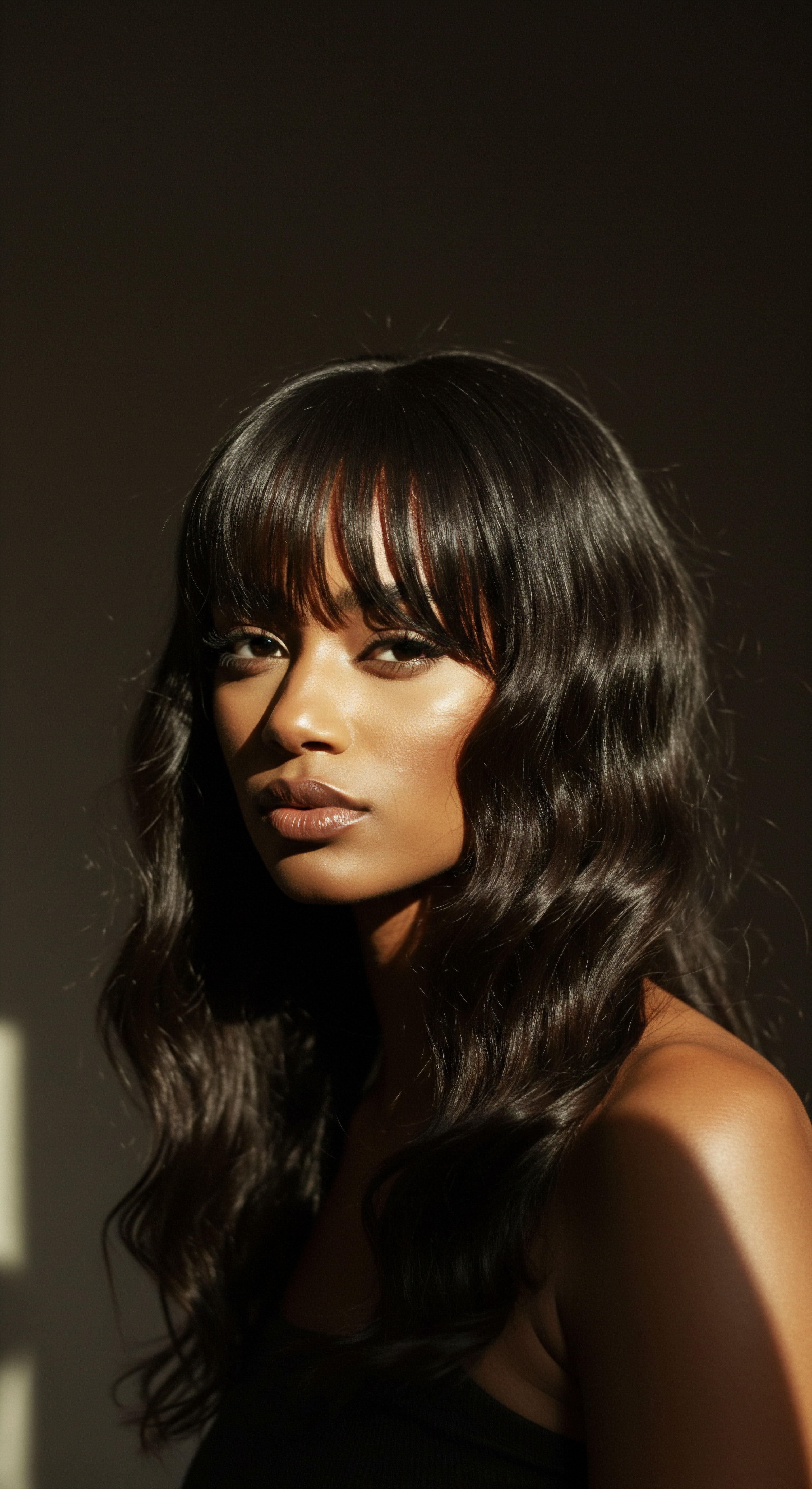
Reflection
The journey through the intricate world of textured hair, from its deepest structural secrets to the daily practices that honor its unique nature, brings us to a quiet understanding. It is a realization that true care transcends superficial fixes, inviting us to see beyond frizz or dryness to the very heart of the hair fiber. This deeper appreciation permits a mindful approach, where every choice, from the tools we select to the ingredients we apply, is informed by a respectful dialogue with our strands.
As the light catches a perfectly defined coil or a resilient wave, it reflects not just external beauty, but the quiet triumph of knowledge applied with tenderness. The story of textured hair is one of enduring strength, of remarkable adaptability, and of a beauty that becomes even more profound when we truly understand its roots.

References
- 1. Gominho, R. M. & Rodrigues, G. R. (2023). Porosity and Resistance of Textured Hair ❉ Assessing Chemical and Physical Damage Under Consumer-Relevant Conditions. Cosmetics, 10 (5), 133.
- 2. Evans, S. (2020). Defying Damage ❉ Understanding Breakage in Afro-textured Hair. Cosmetics & Toiletries Magazine .
- 3. Thibaut, S. Gaillard, O. Bouhanna, P. Cannell, D. W. & Bernard, B. A. (2007). Human hair keratin network and curvature. International Journal of Dermatology, 46 (S3), 7-10.
- 4. Draelos, Z. D. (2010). Hair cosmetics. Cosmetic Dermatology ❉ Products and Procedures, 2nd ed. 279-291.
- 5. Davis-Sivasothy, A. (2011). The Science of Black Hair ❉ A Comprehensive Guide to Textured Hair Care. Sivasothy Hair, LLC.
- 6. Robbins, C. R. (2012). Chemical and Physical Behavior of Human Hair (5th ed.). Springer.
- 7. Thibaut, S. Gaillard, O. & Bernard, B. A. (2005). Human hair shape is programmed from the bulb. Experimental Dermatology, 14 (3), 311-314.
- 8. Khumalo, N. P. Dawber, R. P. R. & Ferguson, D. J. P. (2005). Apparent fragility of African hair is unrelated to the cystine-rich protein distribution ❉ a cytochemical electron microscopic study. Experimental Dermatology, 14 (3), 311-314.
- 9. Ali, M. Al-Khulaifi, M. & Ali, N. (2015). Investigation of the Changes in the Hair Cuticle Due to Chemical Degradation. International Journal of Research in Pharmacy and Pharmaceutical Sciences, 2 (1), 1-6.
- 10. Dankovich, T. A. Kamath, Y. K. & Ruetsch, S. (2004). Tensile properties of twisted hair fibers. Journal of Cosmetic Science, 55 (Suppl), S79-90.
- 11. Bernard, B. A. (2003). Hair shape of curly hair. Journal of the American Academy of Dermatology, 48 (6), S120-S126.
- 12. Lademann, J. et al. (2006). Investigation of the influence of humidity on the mechanical properties of human hair. Skin Pharmacology and Physiology, 19 (3), 133-139.
- 13. Ginouves, A. et al. (2019). The what, why and how of curly hair ❉ a review. International Journal of Cosmetic Science, 41 (6), 521-529.
- 14. Gavazzoni, C. S. (2010). Hair ❉ The Scientific Basis of Hairdressing. Milady.
- 15. Gopinath, D. & Ananthanarayanan, R. (2020). Hair Science ❉ A Comprehensive Guide to Hair Biology and Hair Care. Springer.